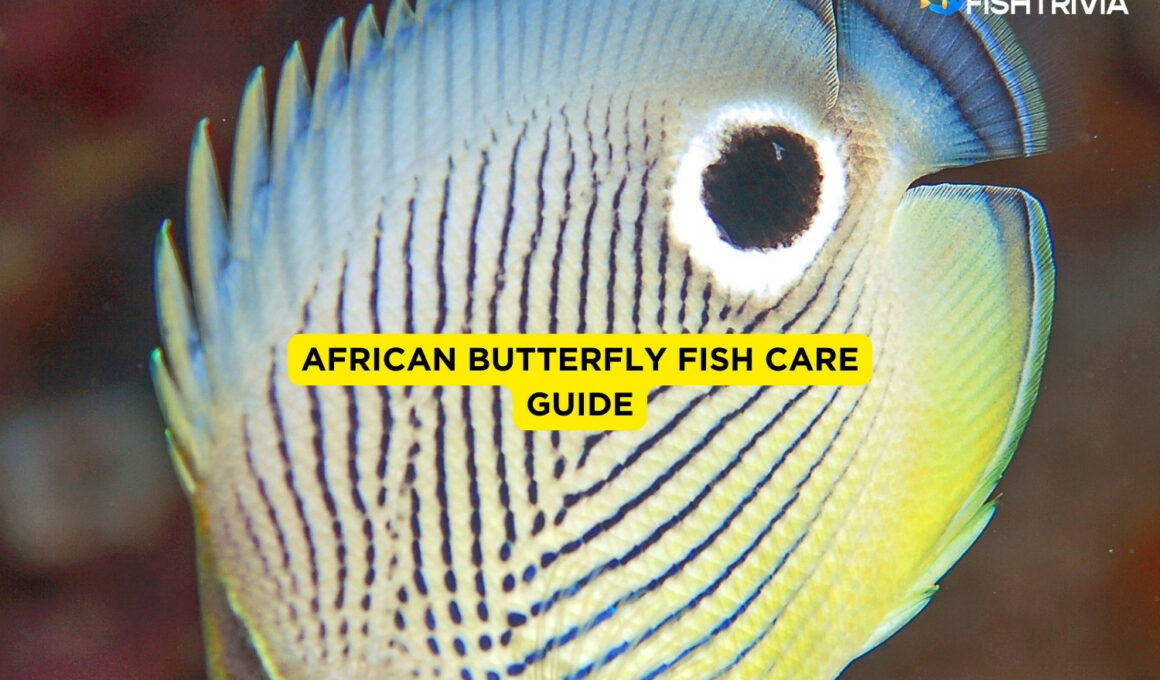In this article Show
Numerous fish keepers adore the African Butterfly Fish, which is also known as Freshwater Butterfly Fish. It is good-looking, and it is a kind of species that do not harm or rather kill its mates in the aquarium.
The species may be found in many aquariums globally, and its popularity has risen in recent years. Butterflyfish are distant relatives of certain other bony-tongue fish, including Arowanas.
The African Butterfly Fish does not outgrow your aquarium, and hence it is preferred by most aquarists and is mainly found swimming at the water’s surface. While there are other similar species, this species is distinctive.
Some of its unique features include their specific environment requirements if you intend on raising them in your home. This article contains guidelines on keeping the Butterfly Fish species right from caring for them, feeding, breeding, and the preferred tank mates.
Also worth reading;
- American Flagfish Care: Habitat, Feeding, Tank Size, and Breeding
- Asian Arowana Care Guide: Habitat, Tank Size, Breeding
- What Do Arowana Fish Eat? (Best Food In The Aquarium For Arowana)
- Why Are Asian Arowana So Expensive? (Explained)
Brief Overview Of The African Butterfly Fish Species
The African Butterfly Fish has existed for a more extended period. It is a freshwater species and hence can also be referred to as the Freshwater Butterfly Fish.
The Butterflyfish are related to Arowanas and some other bony-tongued species. Though frequently misidentified as a saltwater Butterflyfish, this species is found primarily in freshwater. They don’t appear to be anything alike.
This fish species originated from several massive water bodies found in West Africa. Often, you will find them in water with zero or slow-moving currents. To observe this, one should watch their tank habits.
What makes this fish species so unique is that the Butterflyfish is capable of jumping through the air. It can glide beneath the water’s surface if it wants to. They have enormous pectoral fins that mimic butterfly wings, making it possible for them to swim side-to-side as well as back and forth.
As they are in the air, they will fan the pectoral fins out, which results in more surface area. In the wild, they depend on this convenient technique to escape predators.
Since they are optimized to hunt down and escape being fed, the existence of the African Butterflyfish species has not altered significantly in the past million years.
Lifespan
The African Butterfly Fish’s life expectancy is approximately 5 to 6 years when provided with nutritious food and the appropriate conditions. Its lifespan, however, can be significantly increased by finding good breeding with outstanding qualities and taking better care of them.
It is thus essential to choose a specimen with the best traits and ensure that it is provided with the necessary care for a lengthy existence.
Appearance Of The African Butterfly Fish
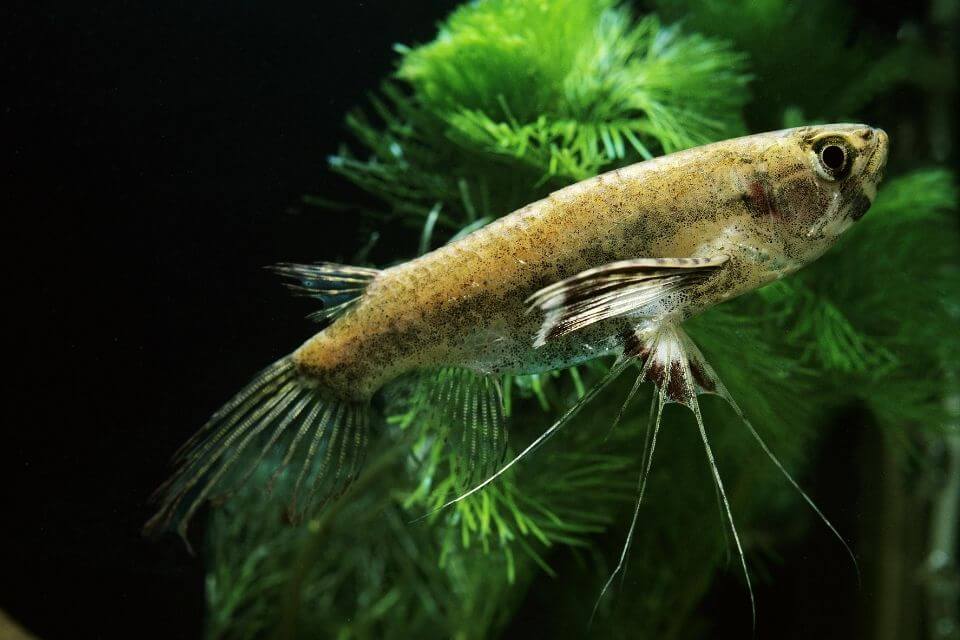
The Freshwater Butterfly Fish’s look contributes significantly to its uniqueness. As previously stated, this fish has remained almost unchanged in appearance for centuries now. Everything with this fish is tailored toward its skills for hunting and survival at the water surface.
The species’ eyes are directed upwards, and their bodies are predominantly flat on top. The inclination of their mouth is also turned upward. This promotes the fish’s ability to ingest food quickly and efficiently while also getting its gills on the surface for breathing.
To keep their prey close at hand, African Butterfly Fish have enormous fan-like fins that face away from their body surface. The fins extend from the top of the body, with many little fins extending from the body surface. They got their name because of the appearance of the pectoral fins while viewed from above.
Regarding both the species’ dorsal and anal fins, their body and tail fin structures are standard in size, although the caudal fin is larger.
The massive anal fin and broad caudal fin, together, provide forceful thrusting motions that enable the fish to launch itself from the water and capture insect prey on the surface of the water.
The fins on all of these fish are translucent, yet there are thin lines of darker color running vertically across each one.
Incredibly, the ventral fins of this species are raised. They have barbells that seem similar to tiny whiskers but do not appear to be critical to mobility; instead, they could be important to helping the creature feel for possible danger.
The African Butterfly Fish is normally brown or grey, and it has a multitude of tiny dots covering the lighter segments of its body. However, a bit of the species’ primary color varies with the specimen.
1. Size
The species grows up to an average length of 5 inches. However, when viewed from, let’s consider an online image, they appear reduced, hence someone may get surprised upon seeing it live.
2. Prey
Due to their efficient ambush-hunting tactics, Butterflyfish are great insect hunters who specialize in feeding on terrestrial insects that fly into the water or become stuck on plants.
These species are excellent jumpers; therefore, their tank should have a relatively tight-fitting lid. As a result, such a feeding technique uses huge eyes and a broad upturned mouth, situated high on the forehead and near the water’s surface, to accommodate larger prey.
How To Care For The African Butterfly Fish
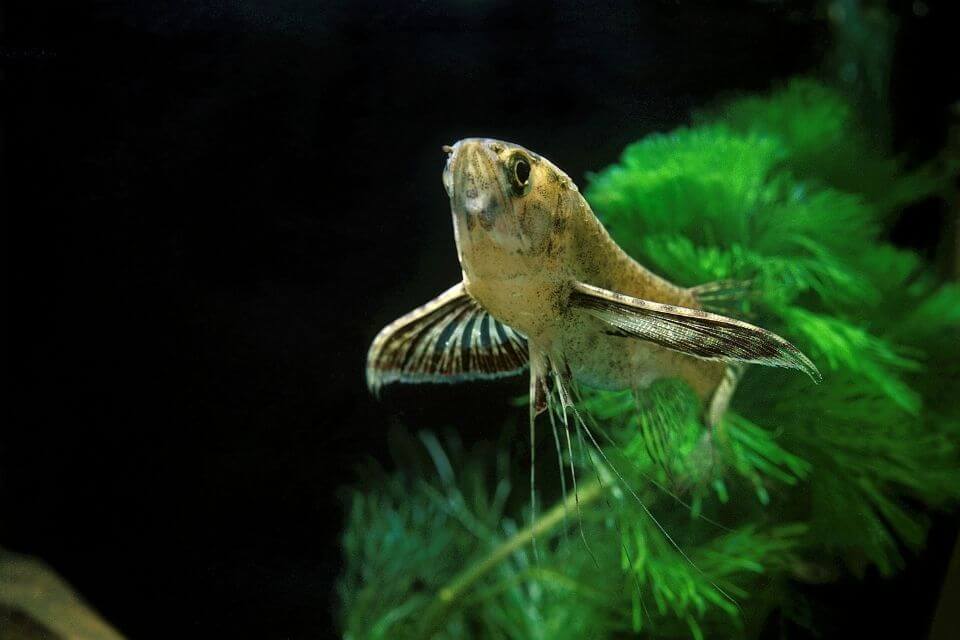
When it comes to African Butterfly Fish care, all we have to do is provide the fish with a proper environment. Care should be taken before getting a fish for oneself, as these fish have special water and tank requirements that need to be considered.
Size Of The Tank
The African Butterfly Fish requires a minimum of 40 gallons. As we’ve seen, these species spend much time on the tank’s surface, and therefore, a deep aquarium will mean a waste of tank space.
Instead, one should get a 40-gallon aquarium that is wide and shallow and still holds the same amount of water.
Water Conditions
One of the most critical factors of the African Butterfly Fish maintenance is keeping the water parameters in optimum balance. For this species to survive, there must be highly particular environmental conditions that have to be predictable and consistent.
It is the most challenging part of running a freshwater fish tank because most aquarists get uncomfortable operating within tight time frames. The water should be between 75°F and 86°F and should have a pH level ranging between 6.5 and 7.
The African Butterflyfish species is susceptible to tank factors, and hence regular monitoring is required. It would most help to set up a routine that tests these properties regularly. One can also purchase a quality aquarium testing kit and use it frequently.
Things To Include In Their Habitats
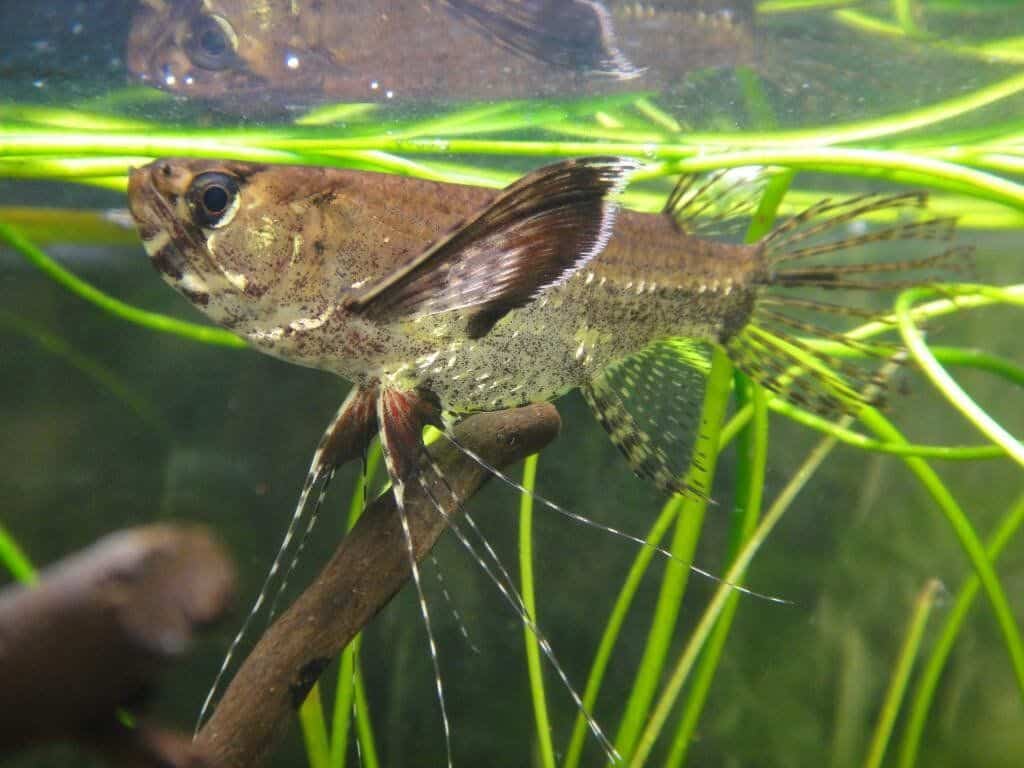
For this species to remain comfortable, they need well-made surroundings. Thus, the aquarist needs to be very selective about the objects that will affect their aquarium.
Vegetation is a vital part of the habitat puzzle. The Butterflyfish is used in environments with dense vegetation, and as a result, spends time hiding among these plants.
Since these species mostly swim at the water surface, several types of floating aquatic plant species will be of much help. African Butterfly Fish require a bit of open space to reach the water’s surface.
Plants can be used to filter light, making objects less bright. When things are excessively bright, they will feel uneasy and may leave the area.
One should not have to be as picky about the substrate they use since they don’t go down very often. The Butterfly Fish enjoy most when the water is in a steady, quiet state, and hence one should avoid any possible disturbances in the fish tank.
1. Diet
Diet plans for the African Butterfly Fish should meet their predatory nature. This fish’s typical behavior explores the water’s surface and prey for small invertebrates and small fish.
The dense vegetation covering the surface retains the living food, making it easy for the fish to discover it. It’s in your best interest to emulate this diet if you would like them to remain fit and maximize their potential for good health.
However, pellets and flakes aren’t a reliable option for this species, as they may lack the nutritional content they require, and they may even end up refusing to feed on them.
Meaty living food could be a better choice, which could include live foods like crickets. A different option is providing them with various insects or even feeder fish.
The Butterfly Fish species are well-suited to a two to four-time day feeding routine. It is recommendable to avoid excess feeding of the African Butterflyfish.
2. Temperament And Behavior
These fish species have unique behavior. Most of the time, these fish tend to remain at the water’s surface rather than having increased movements. This helps them to hunt. Too many movements in their ecosystem will make insects and small fish flee them.
However, as far as feeding time is concerned, the criteria are quite different. Once they’ve spotted their target, they’ll dash off to dine, which is made possible by their excellent swimming abilities.
One of the benefits of giving them a handful of feedings each day is that it improves their sense of smell and allows them to track down prey easier. If you place these fish with tank mates who aren’t compatible, they may turn to smaller fish as a food source as they are typical predators.
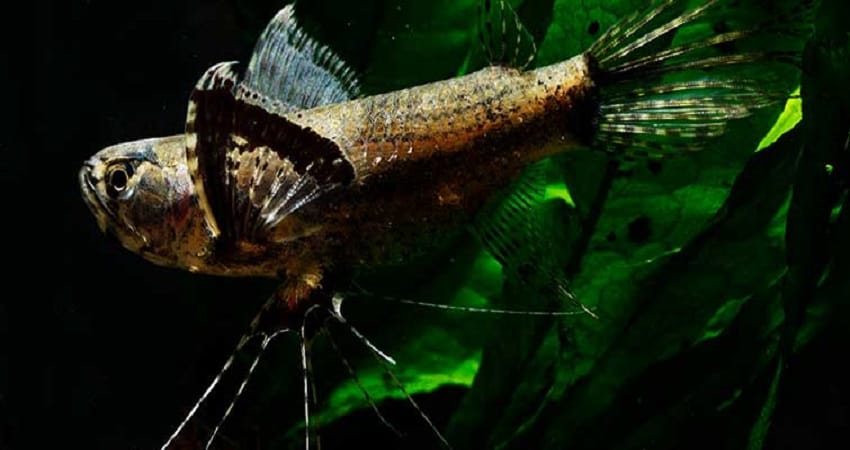
3. Tankmates
Before attempting to introduce African Butterfly Fish to your aquarium, make sure you know a few facts about these creatures. As noted before, these fish are carnivores, and thus if kept with tank mates that frequent the aquarium’s surface, they will be consumed.
This species guards the aquarium’s top and is likely to aggressively resist any new fish introduced to the aquarium regardless of their size.
Whether you own a huge tank or a medium one, observe these guidelines when considering compatibility. Some of the preferred African Butterfly Aquarium mates include;
Rope fish and Kuhli Loach, which, however, requires a larger tank,
- The Bristle nose Pleco
- Neritic snails
- Rubber lip Pleco
- The Cory Catfish, among other species
4. Breeding
Several techniques can successfully raise Butterflyfish larvae; therefore, it’s a reasonably simple task. A variation in water temperature can, however, bring some change.
The opaque white eggs are placed in the aquatic vegetation, where they will float to the surface. When it has been left to sit for 24 hours, it starts to go darker and sink. It takes approximately seven days for the larger eggs to hatch.
Fry parents do not provide parental care for their fry, and they will likely consume them. It is best to remove the adults from the aquarium when there are eggs available, to increase the Butterflyfish brood.
Conclusion
Keeping the African butterfly fish in your home aquarium is an exciting and rewarding experience. They are effective in safe environments with tank mates of the appropriate size, and they hardly breed.
The benefit of Butterfly Fish care is found in every aspect. These remarkable fish are delightful to watch and would make a handsome addition to your home aquarium. However, taking care of the African Butterfly Fish will require one to pay greater attention, which is gratifying.






